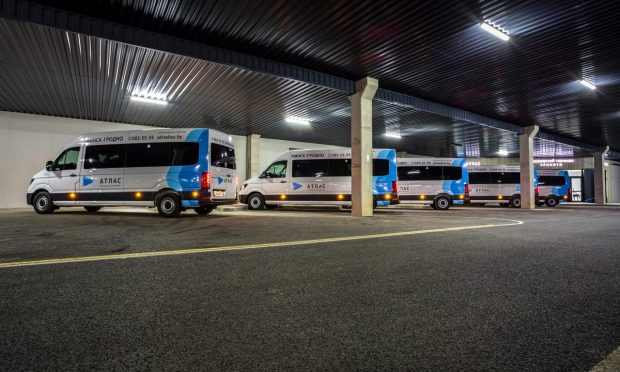Cities Delve Into Data to Connect Dots in Parking Puzzle

During the darkest days of the pandemic, two delivery trucks double-parked on an empty street were the least of our worries.
But now that we’ve all have returned to the city streets in force, a different story is playing out. Delivery trucks are snarling traffic and annoying motorists and pedestrians alike. And, especially vexing to city planners and local retailers, they’re taking all of the parking spaces.
Given the fact that the number of deliveries hasn’t subsided along with daily infection rates, it isn’t an exaggeration to say that eCommerce can often find itself on a collision course with public demand for curbside parking.
“That requires a management system to be able to not only take, accept and receive payments but also, much more broadly speaking, it means a better management system to be able to manage those complexities that occur at the curb,” David Evans, CEO at Passport, told PYMNTS.
Weaving Solutions Together
Passport works to solve those and other challenges around parking. The company provides a platform that can be used to manage mobile pay parking, parking enforcement, digital permitting, payments and more. Its customers include municipalities, universities and private parking operators.
Passport also partners with many kinds of apps. Evans said there’s a significant opportunity to solve curbside and other problems around parking, and there are many players that offer point solutions that could help in these situations.
“If we could somehow weave all that together through a single use case platform — that pane of glass for a city to log into every day — that’s a huge opportunity for us,” Evans said. “That’s the game we’re trying to play.”
Helping Answer Municipalities’ Questions
At the city and municipality level, parking is still a fragmented landscape and disparate systems are being used, Evans said. These entities are in very early stages of the adoption cycles around digital technologies, embedded technologies and payment as a service.
“When you combine that with the complexities that have really been born out of the pandemic, all of a sudden, cities are waking up to complexities that are underscored through exaggerated circumstances, where a trusted strategic partner with a leading platform starts to make a lot of sense,” Evans said.
Rising gas prices might present another opportunity for parking management solutions, Evans said. For example, that may mean more use cases for public transportation, delivery and electric vehicles.
In the case of the growing number of electric vehicles, data could help cities better understand how to think about recharging capabilities for electric vehicles.
“How does a city know where to place those chargers, for example?” Evans said. “Well, if we have a good view through our platform of how people move about a city and through what modes and means and by what demographic profile, that certainly helps to answer some of those questions.”
Developing a Vertically Integrated Solution
The parking management industry can learn from other vertically integrated sectors that have consolidated around a leader and provided a blueprint in terms of data, privacy, security, integration, public application programming interfaces (APIs), back-office solutions and ultimately enveloping all these things through payments as a service, Evans said.
“As it pertains to those people who are in this space, who is going to be able to bring that legacy knowledge to make sure it’s done right the first time?” Evans said. “There are certain aspects of that that could present itself for hiccups along the way if it’s not handled right. So, for me, that’s where I was so excited about this opportunity.”
